Course details
Duration
Two years
Delivery
Online and part-time
Start dates
January and September
Next welcome week
20 January 2025
Next course start date
27 January 2025
Application deadline
10 January 2025
Total course fee
£9,900
Course overview
In a noisy global landscape dominated by visual communication, forging a solid creative identity can be a major challenge for graphic designers. Our comprehensive, multi-disciplinary course will equip you with the ability to elevate your creative practice and so much more. With units focused on urgent global issues such as sustainability, inclusivity and human-centric design, you’ll embark on a transformative journey that empowers you to help people and the planet.
Today’s business market is in high demand for graphic designers who can think laterally, apply critical thinking to their own practice, and engage meaningfully with the world around them. While day-to-day professional experience is invaluable, it takes outstanding academic teaching rigour, theoretical knowledge and contemporary research resources to raise your discipline to the next level.
Our course seamlessly blends theory and practice centred around the three pillars of design: Design Strategy, Usability, and Creativity. Together with your peers, you’ll explore your discipline through critical debate, theoretical enquiry, and multi-modal practice.
What is the graphic designer’s fundamental role in society? In what ways does culture and human behaviour influence (or get influenced by) the graphic designer’s work? How can graphic design be channeled to tackle contemporary social issues such as climate change, waste, inclusivity and accessibility? These are just the beginnings of what you will dive deep into with your cohort, as you broaden your career prospects and shape a better future for our world.
Online MA Graphic Design course overview
Watch the course overview video to gain insight into who the course is for, what makes it stand out, what you will learn, and the advantages of studying with AUB.
Click here to read the video transcript.
Course units
The units within this course have been designed to broaden your creative horizons and give you a global perspective of how graphic design fits into the bigger picture. Together with our academics, you’ll hone your craft as part of a virtual studio community, inform your practice with evidence-based neuroscience, and explore how design can be used to drive positive change.
This introductory unit is designed to orientate you with postgraduate study. Where does your past and present practice fit within contemporary graphic design? Which directions might you take in the future? You’ll also be challenged to expand on your own reference points as a practitioner.
Combining theory and practice, we’ll delve far beyond the aesthetic surface of graphic design. You’ll be introduced to design thinking: a research-informed, iterative process for understanding audiences, challenging assumptions, and ensuring that your designs have the right impact. This will shape your creative output before the creation stage, elevating your work as a catalyst for problem-solving.
Through the combined lens of both design and theory, we'll help you centre your practice on the UN’s sustainable development goals. Mirroring professional experience, you’ll be asked to make a successful communications strategy or campaign that prioritises eco-consciousness every step of the way – from the use of sustainable materials to the creation of impactful messaging.
For designers, the five senses are an important consideration when it comes to promoting certain customer behaviours. In this theory-based module, we’ll explore how sensory design can be used to influence brands and branded environments. You will then work collaboratively with your peers to design, present and reflect on a branded experience.
This unit will delve into cognitive science: the interdisciplinary study of mind and intelligence. We'll explore how the graphic design process and typography has been revolutionised by neuroscience, evidence-based design, and AI. You’ll also be tasked with creating a statement and either choosing or creating typography that amplifies, enhances, or elucidates your message.
Contemporary design practice often focuses on user needs, and this has ultimately shaped the landscape of customer experience. In this unit, you will learn how to adopt human-centred design: a problem-solving technique that puts real people at the heart of the development process.
Through several real-world case studies, we’ll explore ‘nudge theory’ in visual design. You’ll develop a profound understanding of how your projects can influence audience behaviours, shift social perceptions, and act as a catalyst for positive social change.
Together, we’ll explore how to become champions of inclusive design. Inclusive design is a design process that considers diverse groups of people and their needs in visual communication. You'll learn how to make your products, designs and services usable by as many people as reasonably possible – no matter what their age, ability, and socioeconomic background.
This module represents a pivotal point in your academic journey. Together, we’ll help you define the study focus for your Final Project. You’ll also reflect on your purpose as a graphic designer and determine the lines of enquiry you will delve into in your future practice.
This final module is your opportunity to demonstrate the vast breadth of knowledge and skills you have acquired. You’ll work independently to produce a resolved, research-informed, practical project on the topic outlined in your research proposal.
Meet the academic team
Steph Horan, Course Leader
Steph Horan is a Senior Designer and founder of branding agency Blue Walnut Design. Her passion is typography, with a fascination for the psychology of brand and the science behind the emotional impact of type in the branding process.
View profile
Briony Hartley, Unit Leader
Briony is a graphic designer, typographer and colour consultant and has headed her own business, Goldust Design, for over 20 years, working within the publishing, arts and cultural sectors.
View profile
Andrew Byrom, Unit Leader
Andrew is an interdisciplinary designer with clients including The New York Times, Sagmeister Inc., Penguin Books, Standard Chartered Bank, The Museum of Latin American Art and The Architecture + Design Museum.
View profile
Jazzy Olive, Unit Leader
Jazzy is an MRes Healthcare & Design graduate from the Royal College of Art and Imperial College London — where she founded Edna: an all-in-one hub for DA (domestic abuse) care and an ongoing research project utilising AI & user-centred models.
View profile
Justine Wyness, Unit Leader
Justine is a seasoned e-commerce professional and has worked with some of the UK’s favourite brands. These days Justine works with mid-sized retailers to improve their digital offering and grow their e-commerce profit and loss.
View profile
Lucy Biggs, Unit Leader
Lucy is an experienced senior lecturer, having worked in the fields of design and academia for over 15 years. Prior to joining the AUB team, she worked at Manchester School of Art, teaching on the prestigious BA (Hons) Graphic Design programme.
View profile
Simon Lown, Unit Leader
Simon is a seasoned Graphic Designer from the UK with over 20 years of experience in creative direction and brand consulting. His work is influenced by his passion for adventure and the outdoors.
View profile
Tom Le Mesurier, Unit Leader
With over 15 years of experience in the Digital Design landscape, Tom has been at the forefront of branding, web design, and digital strategy.
View profile
"Central to our course is a focus on sustainability in design. Designers can foster innovation for societal change in materials, processes, and design thinking."
Stephanie Horan | Course Leader, MA Graphic Design
Entry requirements
We encourage applications from students with a broad range of qualifications and we welcome students from all educational backgrounds. We’ll take into account the knowledge and skills that you have developed outside the classroom, as well as your previous qualifications.
There are two different routes to entry: the standard and non-standard routes. Admissions staff will assess entries to determine which route is appropriate for you when you apply.
Students accepted on the standard route are given offers based on qualifications and supporting documentation alone. If you do not have a qualification at the designated level or in a subject not directly related to the course to which you are applying, you’ll be contacted to request a portfolio, and/or given an interview date.
You'll usually have BA (Hons) Degree graded at 2.2 or above, or an equivalent UK or international qualification in graphic design or the following related subjects: illustration, animation, photography, art or media.
You'll usually have BA (Hons) Degree graded at 2.2 or above, or an equivalent UK or international qualification in graphic design or the following related subjects: illustration, animation, photography, art or media.
As an overseas applicant, you’ll need to validate your proficiency in English. We accept a range of English language qualifications:
- Cambridge Certificate of Advanced English (CAE) grade C
- Cambridge Certificate of Proficiency in English (CPE) grade C
- Certificate of Attainment in English (London Board) level 5 or 6
- IELTS score of 6.0 or above with at least 5.5 in each band
- TOEFL iBT score of 80 or above with 19 in speaking, and 18 in listening, reading and writing
- Pearson PTE score of 64 and over, with a score of 59 in each component
IELTS, Pearson, and TOEFL scores must be less than two years old at the time the course commences to be valid.
If you don’t have the standard academic qualifications, you could still be considered for entry if there’s sufficient evidence to indicate that you can fulfil the objectives of the course of study and achieve the standard of the final award. An example of this would be to showcase a portfolio of work as requested by the admissions team.
We also welcome applications from anyone with other qualifications or work experience that demonstrates appropriate knowledge and skills to study at postgraduate level.
Industry professional guest speakers
As an MA Graphic Design student, you’ll get exclusive access to presentations from industry professionals. You’ll get an insight into current industry practice, as well as lots of research sources and networking links.

Sonnaz Nooranvary
Sonnaz is a UK-based creative entrepreneur and craftswoman, best known for being the resident upholstery expert on The Repair Shop. Passionate about supporting and inspiring future generations of creatives, Sonnaz is increasingly outspoken on sustainability within the interiors industry.
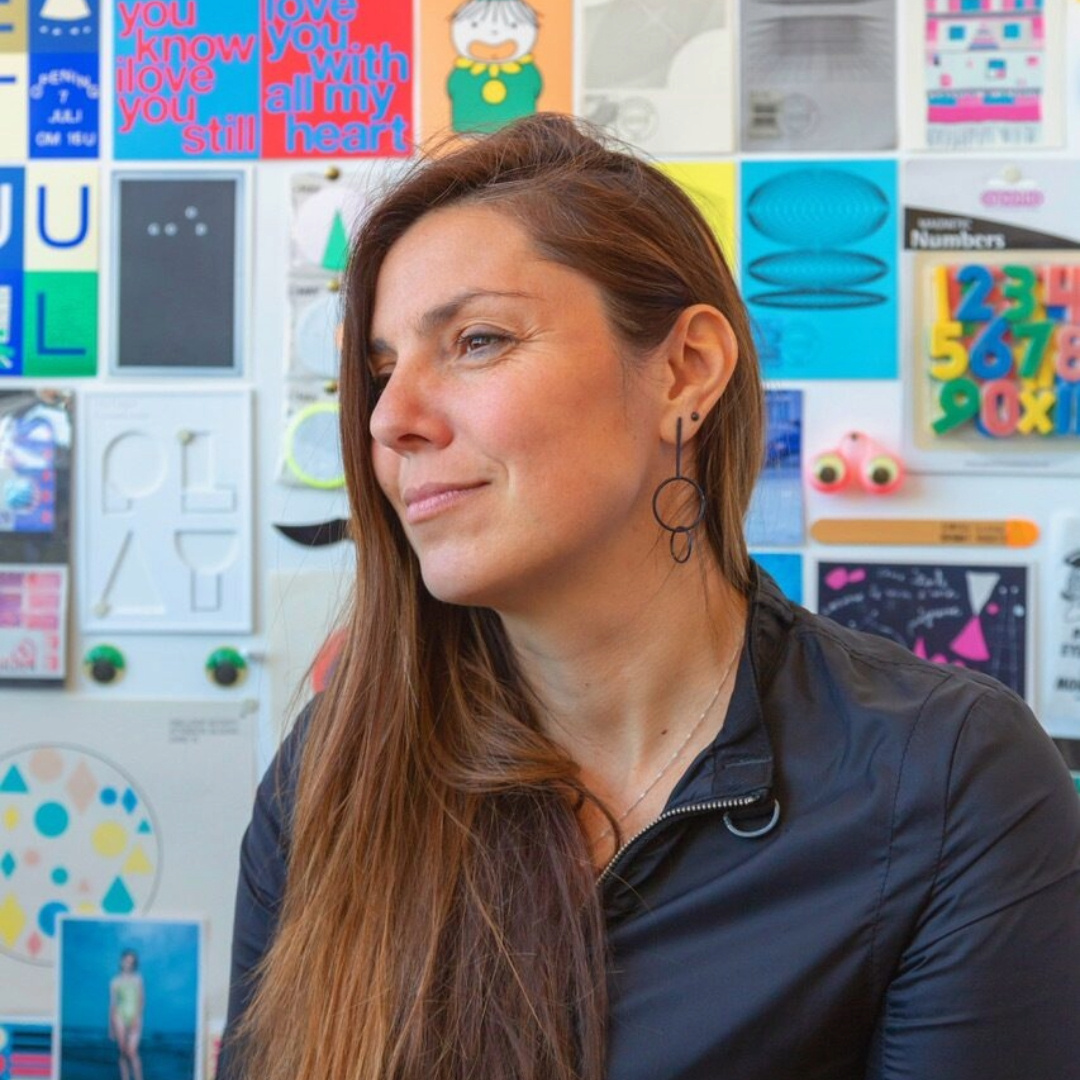
Rejane Dal Bello
Rejane is an award-winning designer with more than 20 years of experience, including stints at renowned agencies such as Wolff Olins (UK) and Studio Dumbar (NL). As the founder of Studio Rejane Dal Bello (SRDB), based in London, she specialises in helping brands find their unique identities by creating design that has impact and purpose.

Paul ‘Nobby’ Davies
'Nobby’ knows all about the challenges creatives face. How? Because he's been there. Nobby has more than 40 years of experience as an award-winning creative in advertising, branding and design. Now, as the Creative Elder, he helps every type of creator realise their full creative potential.

Jason Bascombe
Jason is the Creative Technologies Lecturer at AUB. He is deeply engaged in researching generative AI, exploring its application across a diverse range of creative disciplines. Jason is particularly focused on integrating these innovative tools into creative workflows, ensuring that they complement rather than dominate, thus maintaining a significant level of human agency in the creative process.

Clara Gaggero
Clara is a designer, inventor and educator leveraging human-needs to create meaningful innovation. Her mission is to improve lives through hopeful and sustainable design solutions that encourage well-being and a healthy relationship with technology. Clara has designed award-winning products for the likes of BBC, Braun, Nokia, Google, Samsung, Sonos, Lego and Logitech.
.png)
Sarah Hyndman
Sarah is the founder of Type Tasting and the author of Why Fonts Matter. She entertains audiences with her unique blend of science, activities and sense-hacking. She’s been measuring your emotional and multisensory responses to fonts since 2013. She’s a TEDx speaker and a judge for the D&AD awards. She appears on TV and radio and has been featured by CNN, Dazed and Wired. She co-publishes studies with Professor Charles Spence of the University of Oxford and is chef Heston Blumenthal’s font science expert.
Fees and funding
The fees that you pay AUB help provide the necessary services and training for you to complete your course. There are a number of different ways that you can pay for your tuition.
How to apply
Head to our online application form to apply directly to us. We encourage applications from students with a broad range of qualifications – we'll take into account the knowledge and skills that you've developed outside the classroom as well.
Careers in Graphic Design
As a graduate of this course, you’ll unlock a diverse range of varied, rewarding career options in the future. Innovative designers are in high demand at companies worldwide. With the knowledge you acquire at AUB, you’ll stand as someone who can help them meet their sustainability and inclusivity goals – and you'll be able to navigate these issues with confidence.
The international network you’ll develop with your peers and tutors will also broaden your knowledge and help you get established as an in-house or freelance graphic designer. Whichever route you choose, your industry-ready skills will empower you to spearhead positive change in the world and drive companies toward success.
Of course, establishing yourself as a graphic designer is just the tip of the iceberg – there are many areas in which you can apply your skills. Whether you’d like to bolster eco-conscious brands, advise businesses on sustainable practice, design eco-friendly packaging with recyclable materials, or branch out into inclusive web design, your dream job will be within reach.
Here are just a few of the options you could pursue as an MA Graphic Design graduate:
You could also pursue opportunities in innovation strategy, UX research, and packaging design.
MA Graphic Design experimental process student work
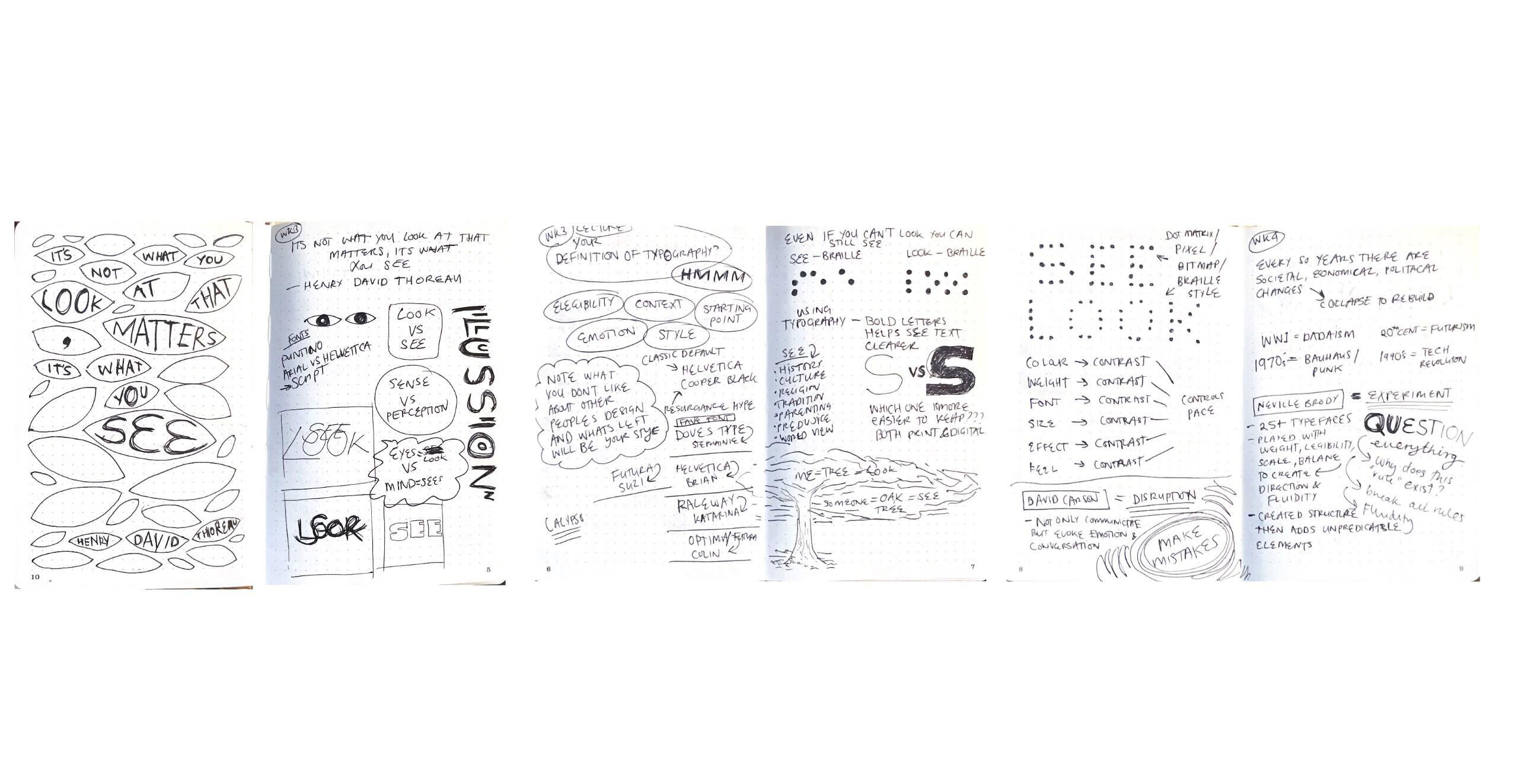
Brian Hollingworth | MA Graphic Design
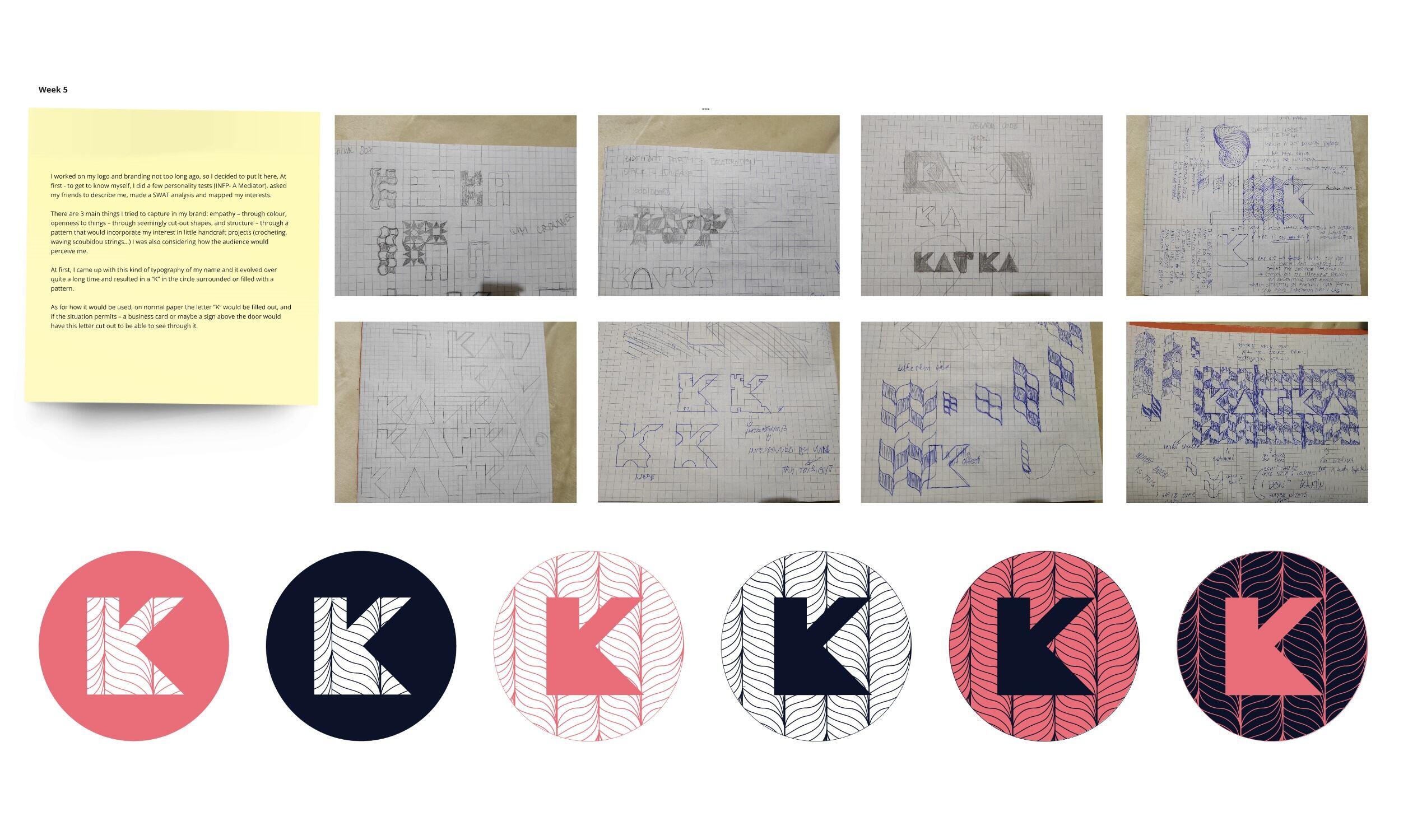
Natalia Cervinkova | MA Graphic Design
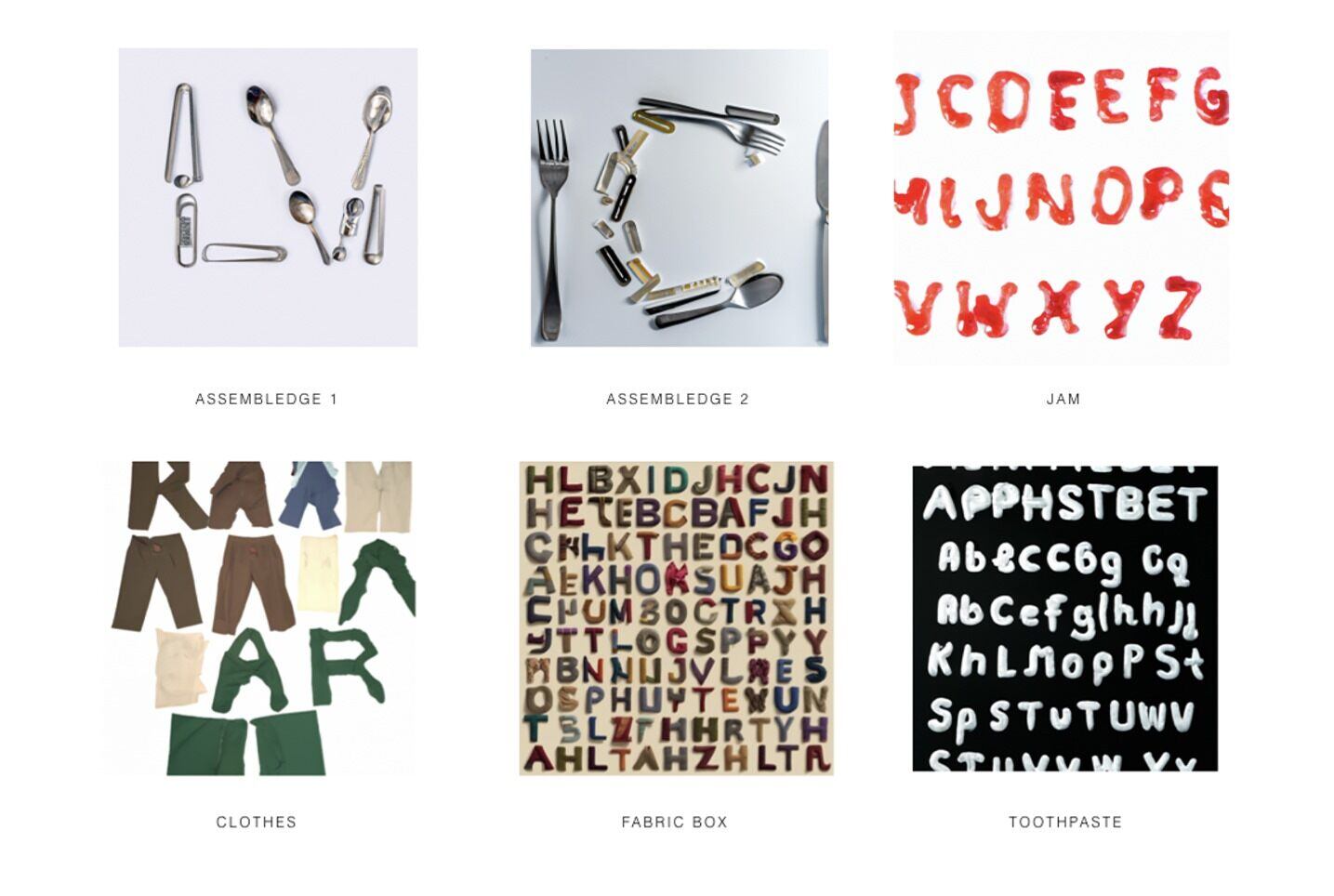
Simon Diplock | MA Graphic Design

Sophie Legg | MA Graphic Design
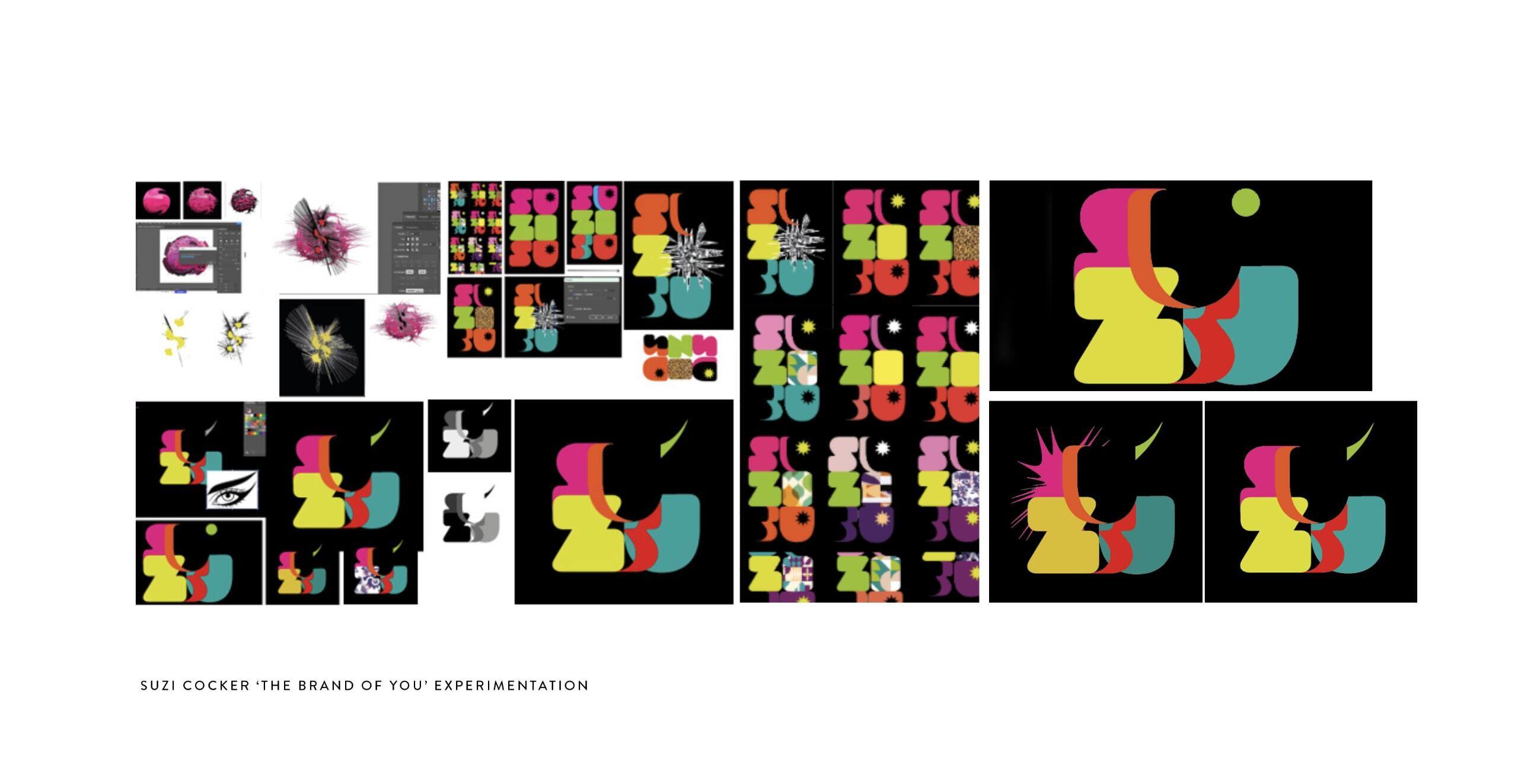
Suzi Cocker | MA Graphic Design
.webp)
Latasha Hammond | MA Graphic Design
Join us in January 2025
Video transcripts
This course is suitable for students who wish to build on their current and existing knowledge in graphic design, but also maybe transfer from other subject related areas. This could include art and design, digital design and development, possibly the print industry or illustration, and maybe even subjects such as marketing.
Uniquely, this course has lots of short credit modules and this is advantageous for students working, who want to study maybe alongside a job or with other commitments and they can manage it at their own pace and in their own time. It also means we can introduce broader subjects, which touch on traditional graphic design, but offer insight into other industries which is really necessary in the world of graphic design today. And it makes this particular course is unique because we have a professional, leading in their industry at the head of each of these modules. So you're getting a flavor, for example, of, human centered design by a UX and UI specialist, which looks at design thinking and ways of doing things differently.
We also have a a module which is designed for inclusion, where we look at, people from neurodiverse backgrounds or designing for an aging population for example. And we these days you have to look at strategy and in broader marketing skills as well.
They will learn a multitude of skills from the very, short fifteen credit modules, where we have an industry expert, the head of each module. This is so that students can have that they can think laterally. So we're trying to create students that have perception to, identify problems to solve as well as become solve problem solvers in the world of design.
So this MA award offers the, the bonus of being offered flexibly and online and direct from the Arts University Bournemouth with the advantages of all the study skills, the support, the pastoral care and the exceptional facilities available here at AUB. The The program is a great platform for professionals wanting to further their ambitions in employment or professional practice, for further education or those wanting, inspiration to start their own creative agency or business.
Students are going to learn skills, which introduce broader topics and also touch on traditional graphic design skills. And we're offering these additions to these core skills by, insight into related industries. So the module themes contain subject such as design thinking, knowledge of marketing and targeting audiences, brand strategy, and user experience. These are all the skills that designers will need for the next generation.
Related resources
Typography in graphic design: The power of printed word
Explore the essential role of typography in graphic design and its impact on effective...
Read the storyWhat is human-centred graphic design, and why is it important?
Explore the principles of human-centred graphic design, including the importance of usability,...
Read the storyThe ultimate guide to freelance Graphic Design
Discover the essential steps to launch a successful freelance graphic design career with our...
Read the storyStart your creative journey here.
Want to chat or ask a few questions? Fill this in and we’ll give you a call back.